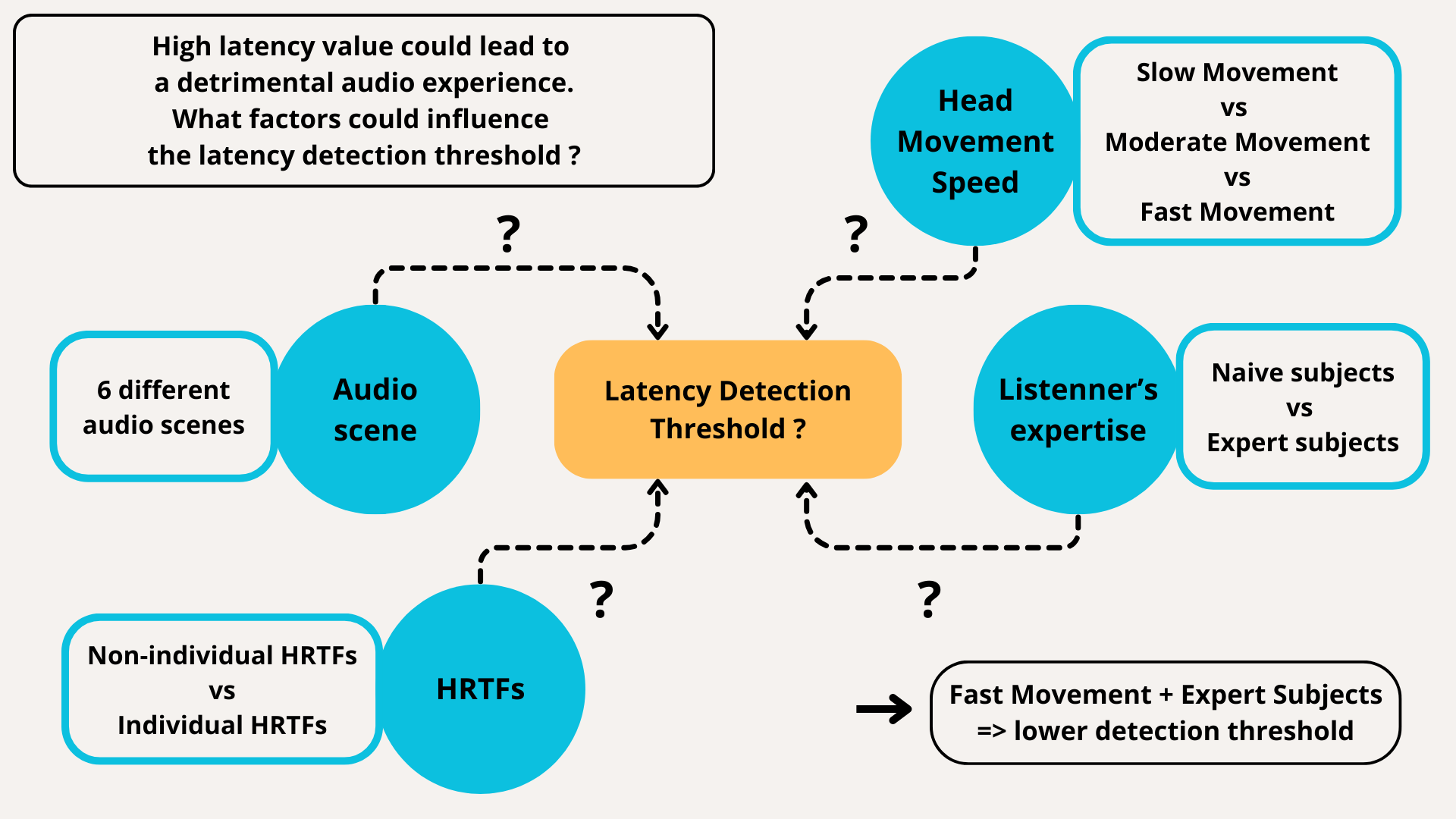Home / Publications / E-library page
You are currently logged in as an
Institutional Subscriber.
If you would like to logout,
please click on the button below.
Home / Publications / E-library page
Only AES members and Institutional Journal Subscribers can download
Binaural audio is a relevant rendering technique for mass diffusion in immersive experiences. By adding a head tracking system, dynamic binaural rendering can improve the overall quality in comparison with static rendering. However, introduced latency between the head movement and the audio rendering is detrimental to the audio experience. Previous studies estimated the latency detection threshold for binaural listening, but the influence of head movements remains unclear. In this paper, two listening tests on latency detection threshold are presented. Several excerpts were used: pink noise, male speech, a pair of congas, and coffee shop ambiance. The first experiment investigated the influence of head rotation speed on the latency detection threshold. The second experiment focused on the impact of head-related transfer functions. An absolute judgment protocol was used in both tests. Results showed that latency was globally easier to detect with faster movement for expert subjects. No global differences between nonindividual and individual head-related transfer functions were observed. In both experiments, pink noise led to a significantly lower latency detection threshold. Large intersubject differences were also observed.
Author (s): Rappin, Clément; Palacino, Julian; Rueff, Pascal; Feichter, Laurent; Paquier, Mathieu
Affiliation:
Feichter Audio, Lannion (22300), France; Feichter Audio, Lannion (22300), France; Feichter Audio, Lannion (22300), France; Feichter Audio, Lannion (22300), France; Lab-STICC (CNRS UMR 6285), Équipe Perception Sonore, Université de Bretagne Occidentale, Brest (29200), France; Lab-STICC (CNRS UMR 6285), Équipe Perception Sonore, Université de Bretagne Occidentale, Brest (29200), France
(See document for exact affiliation information.)
Publication Date:
2025-03-07
Import into BibTeX
Permalink: https://aes2.org/publications/elibrary-page/?id=22810
(1787KB)
Click to purchase paper as a non-member or login as an AES member. If your company or school subscribes to the E-Library then switch to the institutional version. If you are not an AES member Join the AES. If you need to check your member status, login to the Member Portal.

Rappin, Clément; Palacino, Julian; Rueff, Pascal; Feichter, Laurent; Paquier, Mathieu; 2025; Influence of Head Rotation Speed and Individual Head-Related Transfer Functions on Latency Detection Threshold in Dynamic Binaural Rendering [PDF]; Feichter Audio, Lannion (22300), France; Feichter Audio, Lannion (22300), France; Feichter Audio, Lannion (22300), France; Feichter Audio, Lannion (22300), France; Lab-STICC (CNRS UMR 6285), Équipe Perception Sonore, Université de Bretagne Occidentale, Brest (29200), France; Lab-STICC (CNRS UMR 6285), Équipe Perception Sonore, Université de Bretagne Occidentale, Brest (29200), France; Paper ; Available from: https://aes2.org/publications/elibrary-page/?id=22810
Rappin, Clément; Palacino, Julian; Rueff, Pascal; Feichter, Laurent; Paquier, Mathieu; Influence of Head Rotation Speed and Individual Head-Related Transfer Functions on Latency Detection Threshold in Dynamic Binaural Rendering [PDF]; Feichter Audio, Lannion (22300), France; Feichter Audio, Lannion (22300), France; Feichter Audio, Lannion (22300), France; Feichter Audio, Lannion (22300), France; Lab-STICC (CNRS UMR 6285), Équipe Perception Sonore, Université de Bretagne Occidentale, Brest (29200), France; Lab-STICC (CNRS UMR 6285), Équipe Perception Sonore, Université de Bretagne Occidentale, Brest (29200), France; Paper ; 2025 Available: https://aes2.org/publications/elibrary-page/?id=22810
@article{rappin2025influence,
author={rappin clément and palacino julian and rueff pascal and feichter laurent and paquier mathieu},
journal={journal of the audio engineering society},
title={influence of head rotation speed and individual head-related transfer functions on latency detection threshold in dynamic binaural rendering},
year={2025},
volume={73},
issue={3},
pages={127-143},
month={september},}
TY – paper
TI – Influence of Head Rotation Speed and Individual Head-Related Transfer Functions on Latency Detection Threshold in Dynamic Binaural Rendering
SP – 127 EP – 143
AU – Rappin, Clément
AU – Palacino, Julian
AU – Rueff, Pascal
AU – Feichter, Laurent
AU – Paquier, Mathieu
PY – 2025
JO – Journal of the Audio Engineering Society
VO – 73
IS – 3
Y1 – September 2025